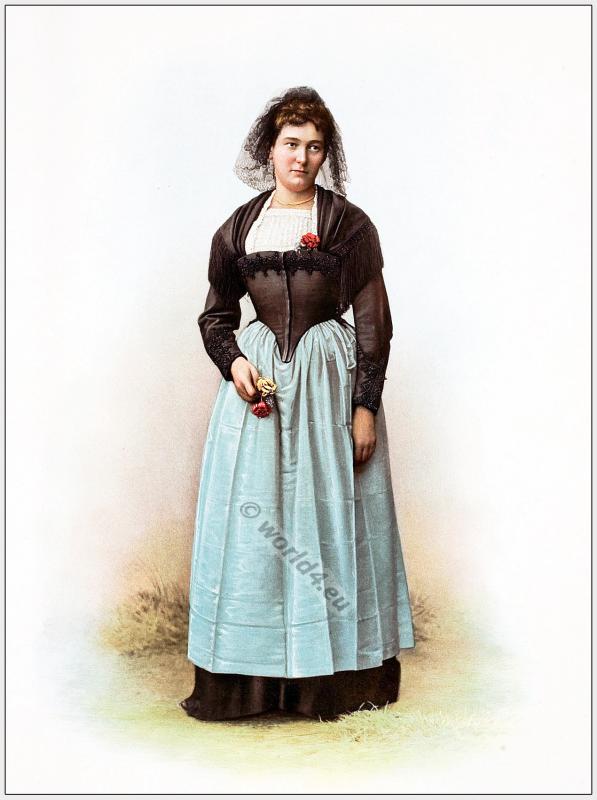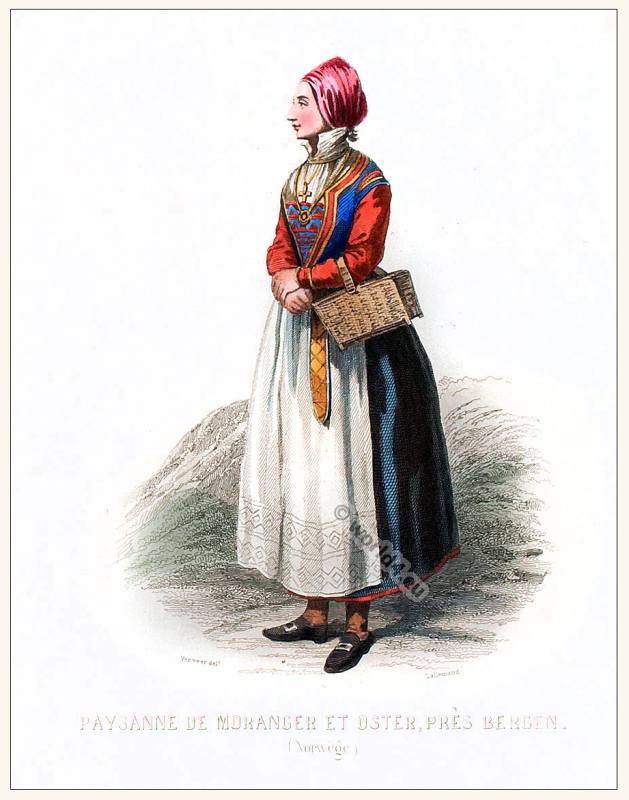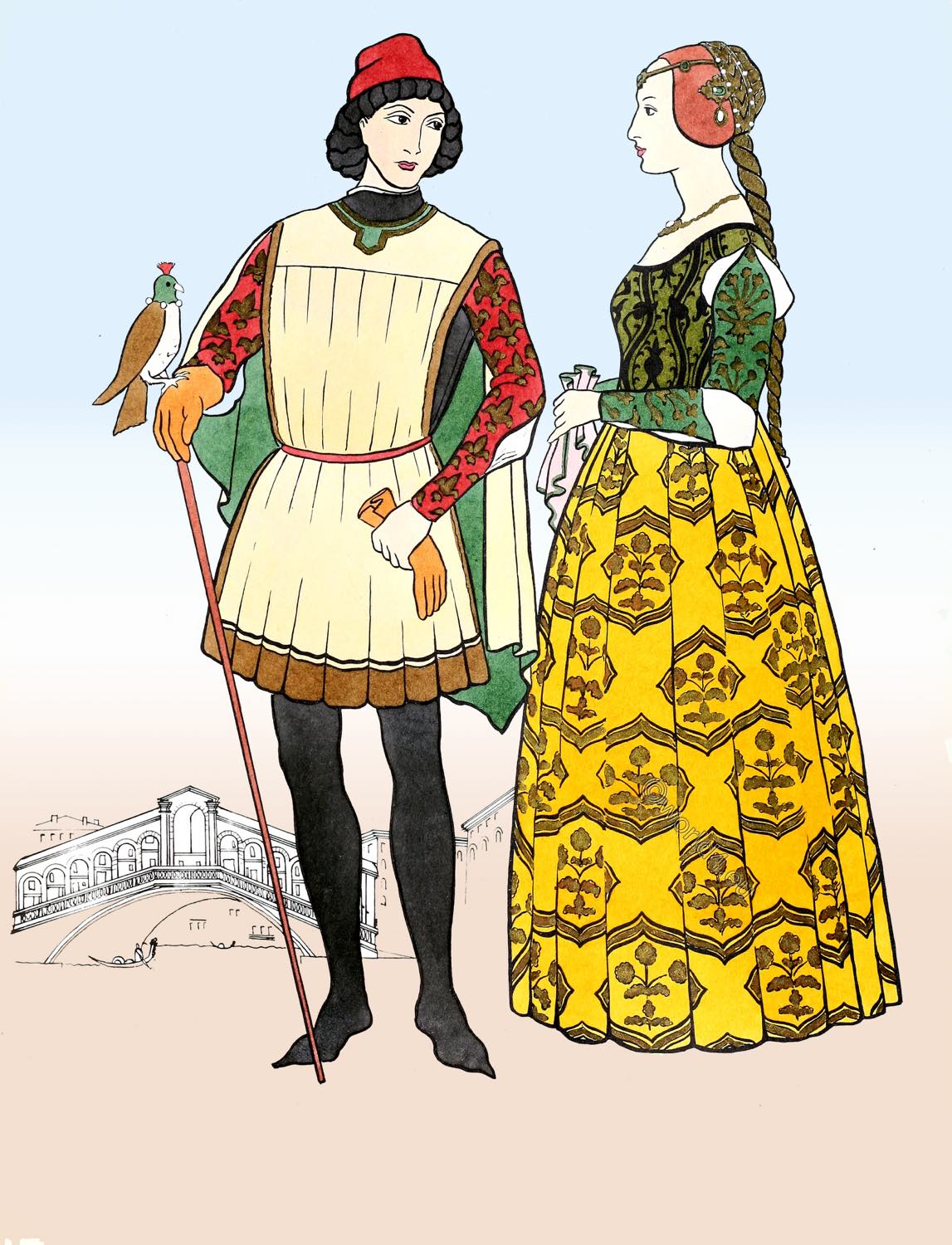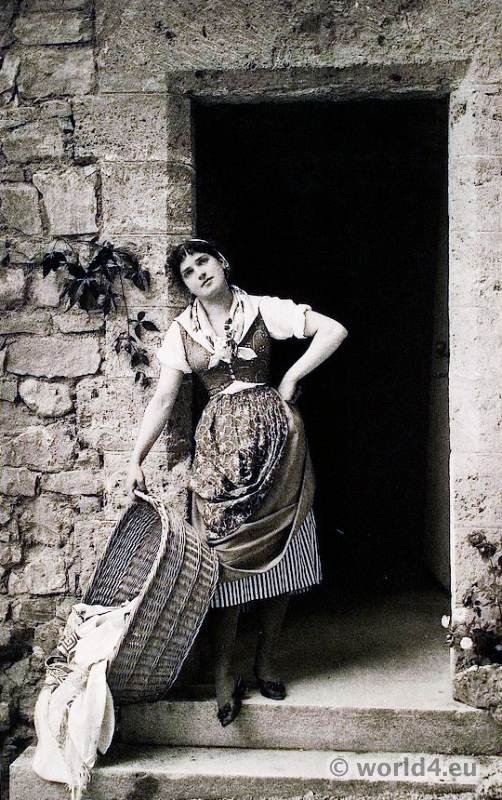
Woman of the Islamic faith of the Druze in 1830.
The Druze, mostly called madhhab at-Tawheed, are in the Middle East a religious community, which in the early 11th Century in Egypt arose as a splinter group of the Shia Ismaili.
Source: Costumes historiques de ville ou de théatre et travestissements. Author: Achille Devéria and José Domínguez Bécquer. Publisher Paris: Goupil et Vibert. Publisher London: Charles Tilt 1831-1839. Printed by: Lemercier & Cie.

Continuing






